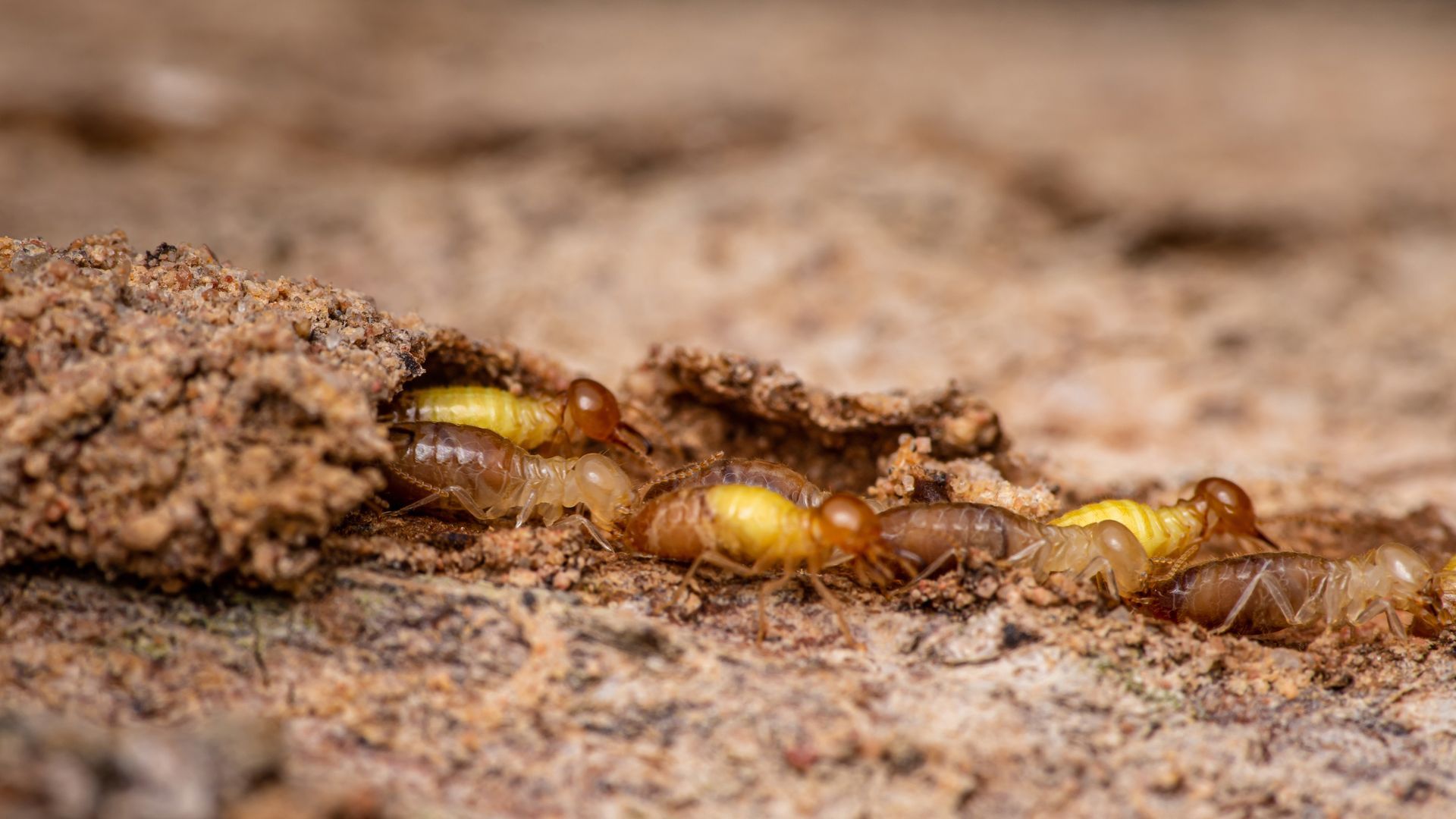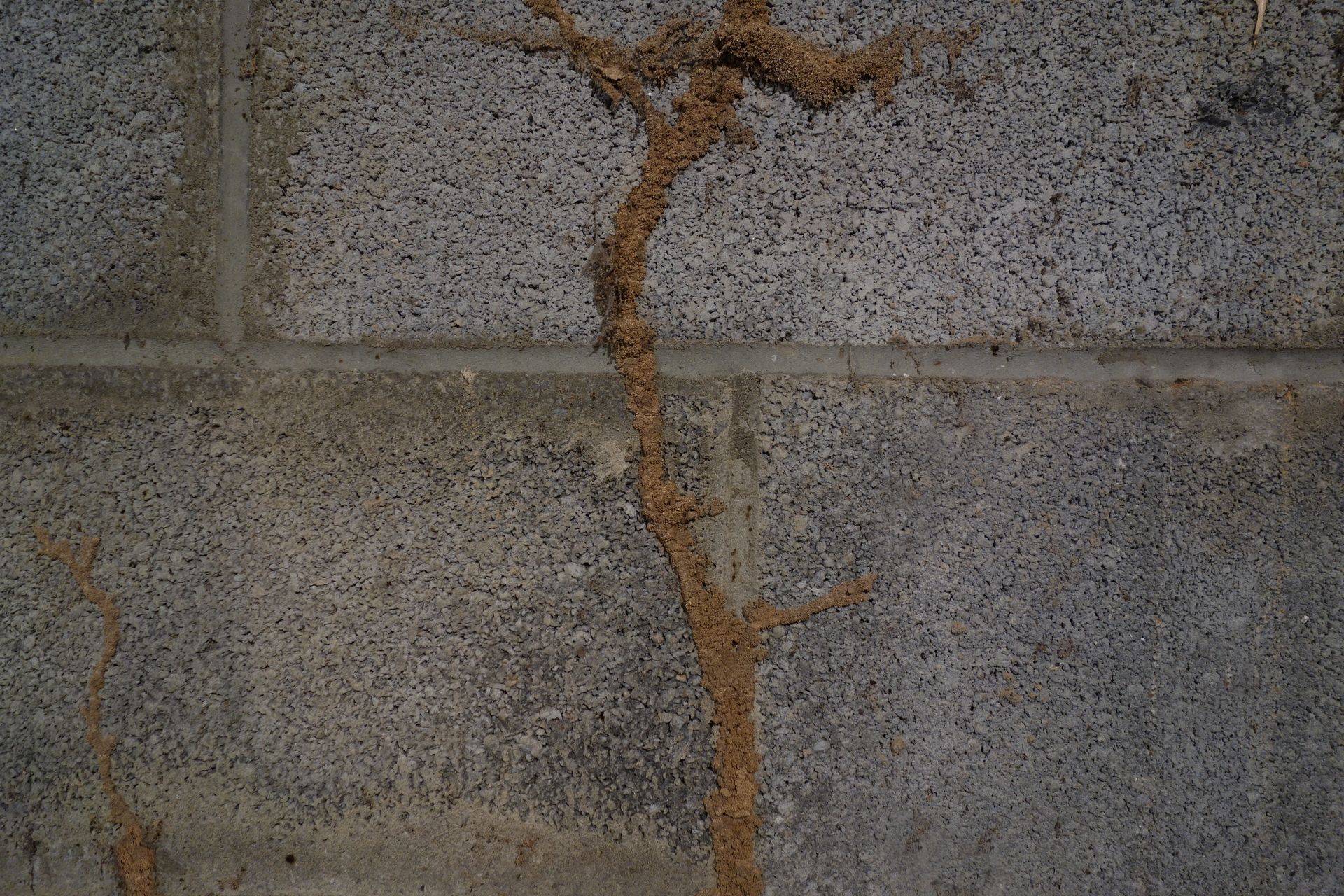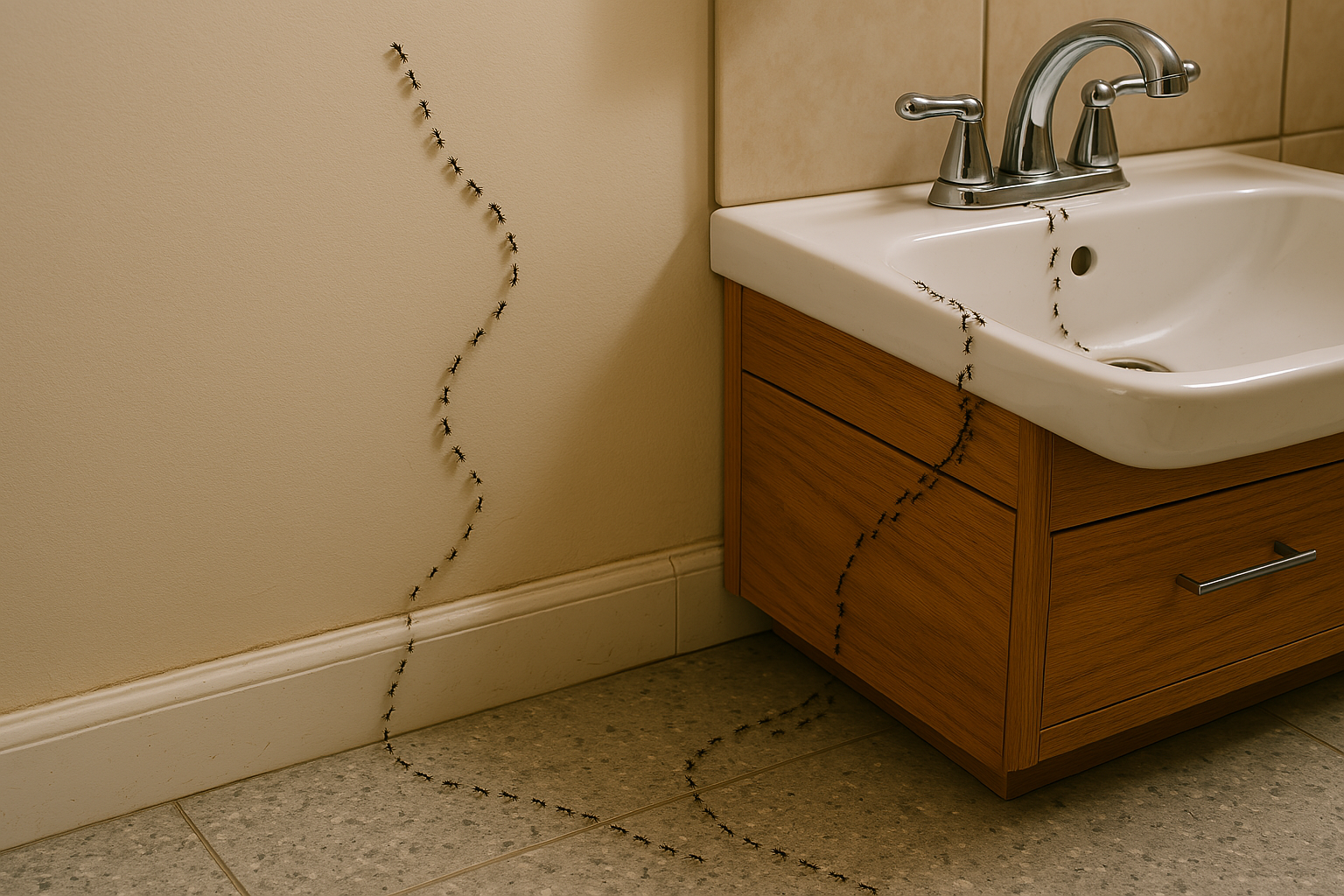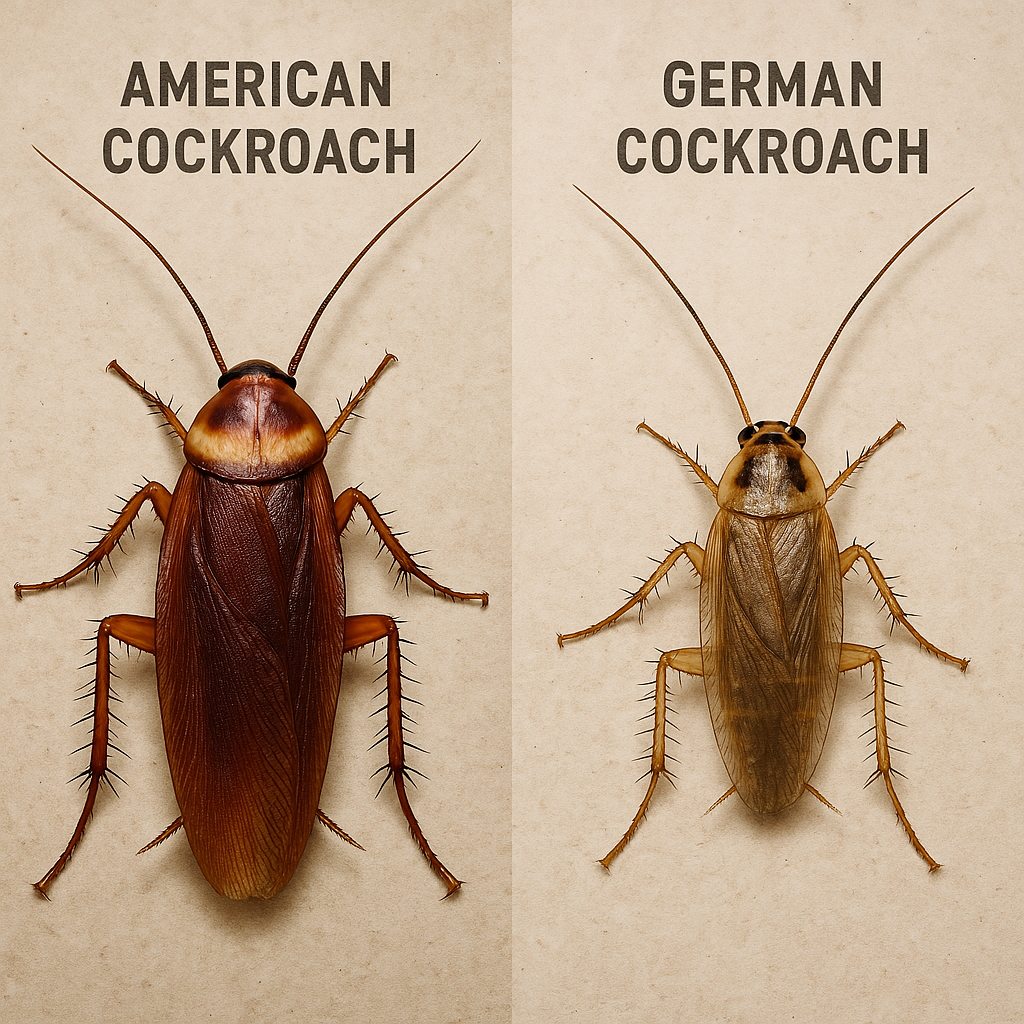What Are Termite Mud Tubes?

Subterranean termites are responsible for building mud tubes. These tubes are needed to connect the underground colonies to the sources of wood above them. They are commonly found where the ground meets foundations or wooden installations and helps protect termites from predators and the elements while they seek out food. Foraging termites will build these tunnels using a blend of soil, digested wood, and termite saliva. Each tube is expanded further as foraging termites move towards a source of wood they can feed on. These tubes have optimal internal environmental conditions which are vital for termite survival. Once the mud tube connects with a source of wood, the termites can use this pathway to move back and forth between the structure and their underground colony. The presence of these tubes is a very strong sign of a large subterranean termite infestation. If you discover mud tubes, schedule a termite inspection with the expert at EcoGuard Pest Management. Our team will be able to create a customized treatment plan designed to exterminate all signs of termites and ensure they no longer present a problem.
Do Termite Mud Tubes Mean You Have Termites?
Termite mud tubes are a strong sign that there is an active termite infestation under your property. Termites rarely leave on their own and as long as there is a source of wood above them to feed on, they will stay to consume the remaining cellulose. The only time when mud tubes would be empty is if there was already a successful termite treatment that killed off the colony previously. Otherwise, these tubes act as protective pathways that allow termites to travel from their colonies to your home. If you find these formations on walls, foundations, or behind siding, you're probably dealing with a termite infestation. Termites can cause immense structural damage so it's important to contact a pest control service to address the issue promptly.
What Do Termite Mud Tubes Look Like?
Termite mud tubes look like veins that are spreading across foundations, walls, and other structures. These tubes are usually as wide as a pencil and look like they are made from dirt. There are different types of mud tubes that have different appearances. Mud tubes that emerge from the ground are for exploratory termites that are seeking out new food sources. These tubes tend to be darker as they are made with more dirt than wood. Other mud tubes fall from above and are built to reconnect foraging termites to the colony. These mud tubes are often lighter as they contain more wood than dirt. It's important to understand that spotting these tubes is a strong sign of an active termite infestation. Thorough and targeted termite treatments are recommended to effectively get rid of termites and their mud tubes.
Where are Termite Mud Tubes Found?
Termite mud tubes are typically found along the foundation of a home or any adjacent structures that connect a home’s subfloor to the ground. The presence of mud tubes isn't always immediately noticeable because examination of a property’s subfloor isn’t part of regular home maintenance checks. The mud tubes can be concealed in less visible areas like crawlspaces, foundation cracks, behind baseboards and siding, or within the walls of your home. Regular inspections by professional termite inspectors is recommended for early detection and treatment for termite activity.
How Are Termite Mud Tubes Built?
Termite mud tubes are also known as shelter tubes. They are constructed using a blend of soil, digested wood, termite saliva, and other organic materials. When subterranean find an above-ground food source, they start tube construction. Termites will start to layer the mix of dirt and wood particles using their saliva which acts as a binding agent. The tubes are created layer by layer until they cover the distance between the termite colony and their targeted food source. These tubes are often built using walls, foundations, and other surfaces as support. Other tubes can be created in the form of stalagmite-like pillars known as "drop tubes." These mud tubes bridge the gap between the soil and overhead wooden structures.
How Long Does It Take to Build Termite Mud Tubes?
Termites will work continuously as long as they have access to ample resources. They can usually construct basic mud tubes in just a few days but reinforcing these tubes for regular use can take several weeks. In areas with pre-existing structures, such as decayed wood or concrete cracks, the construction time is reduced due to less mud being required. Initially, termites craft exploratory mud tubes to survey their surroundings. If an area proves unfruitful, they seal it. However, upon discovering valuable resources, they expand and fortify their tube network. The construction of a termite colony’s tunnels, mounds, and nests can take multiple years. If termite tubes are found around your home, it's likely that there has been an active infestation for at least a year.
Why Do Subterranean Termites Need Mud Tubes?

Subterranean termites construct mud tubes primarily for protection from the elements and navigation. Termites have sensitive bodies, so these tubes shield them from light, dry environments, temperature extremes, rain, and wind. Termites are also attractive prey for various predators like spiders, wasps, centipedes, birds, and some small mammals due to their soft bodies that are abundant in numbers. Mud tubes offer coverage from these predators by keeping termites concealed. There are different types of tubes: "Exploratory tubes" are thinner and spread in various directions in search of food. "Working tubes" are broader and serve as major highways for transporting termites and their food between the source and their nest.
Types of Subterranean Termite Mud Tubes
Subterranean termites construct various types of mud tubes that serve distinct purposes for the colony.
Exploratory Tubes
Exploratory tubes are thin, fragile structures that branch out in various directions. These tubes can stretch up to 15 feet above ground and cover surfaces like concrete or metal. They’re designed to allow foraging scouts to search for potential food sources. Exploratory tubes rise from the ground but don't connect directly to wood. By the time these tubes are detected, stronger working tubes have already been created nearby. The presence of these tubes is a clear indication of termite activity and a potential infestation even if the tubes are vacant.
Working Tubes
Working tubes are often referred to as utility tubes because they are the primary transit routes for termites. They facilitate the movement of termites between their nests and food sources daily. Structured somewhat like a highway, these tubes have designated lanes for various purposes like food transportation, construction, and repair. These tubes range between 1/4 and 1 inch in diameter and are more durable than other mud tubes. Their importance to a colony means that they are built over time to withstand frequent use. The tubes are built thicker and more robust to ensure they remain strong against disturbance. They commonly run along basement walls, home foundations, sills, subfloors, joists, window frames, and beneath porches. Their presence is the strongest indicator for a well-established termite colony.
Swarming Castle
Swarm castles or "swarm mud tubes" are specialized structures built by termite workers to facilitate the orderly departure of swarmer termites from their colony. Swarm castles act as the home base from where termite swarmers take their nuptial flight. These structures are known to exceed 4 feet in diameter and are designed to provide delicate swarmers with protection while they develop. Under the right conditions, the swarmers will exit through the swarm castle, take their initial flight, and start their role as they establish new colonies.
Drop Tubes
Drop tubes resemble stalagmites found in caves and are unique termite structures that connect termites contained in the wooden components of a structure and their colony in the ground. These tubes are designed to provide termite workers with easier access to food sources and help re-establish connections with the ground and other working tubes. While drop tubes share a similar diameter and fragility with exploratory tubes, they are easily distinguished by their lighter color. This coloration is the result of a higher content of wood fibers in the cellulose tube structure.
What Kind of Damages Can Termite Mud Tubes Lead To?
Termite mud tubes, while not directly damaging, indicate the presence of termites which generally leads to significant structural damage over time. A typical floor is made up with the following parts:
- The finished layer – This top layer could be hardwood, tile, or carpet.
- The subfloor – When termites infiltrate and damage the subfloor, it can compromise the home's structural integrity. This can cause issues like squeaking, sagging, or the finished layer detaching from the subfloor.
- The joists (supports) – When termites target the subfloor, they often also damage the adjacent floor joists.
Working mud tubes will normally connect the ground to a home’s subfloor or supports. With enough time, the termites will consume that and move onto the finished layer. By this time, there is likely serious structural damage that needs to be inspected. It's important to consult professionals to assess the extent of the damage and recommend appropriate measures of termite treatment.
How to Tell if a Termite Mud Tube is Active
To determine if a termite mud tube is active, create a break in the middle of the tube. If the broken section is repaired within a few days, there is an active termite infestation moving through those tubes. One might even witness termites emerging from a mud tube if the break was large enough to disrupt the pathway. Finding termite mud tubes or other signs of an active infestation means it’s time to seek professional inspection and treatment to prevent further damage to your property.
What to Do if You Have Termite Mud Tubes
Finding termite mud tubes is a strong sign that there is an active subterranean termite infestation. Getting rid of the mud tubes won't address the root of the problem because all it does is disconnect the colony from its source of food. The termites will continue to build new mud tubes to reach the food until the colony is treated. Although there are several DIY termite control solutions available, attempting these strategies can be ineffective if they aren’t implemented properly. It’s also important to keep safety and health in mind because these chemicals can pose risks to children, pets, and the environment if they are not mixed or applied correctly.
If mud tubes are found, a thorough termite inspection is recommended because termites can be active in other parts of your home. The best course of action upon spotting termite mud tubes is to contact a professional pest control company like EcoGuard Pest Management. Our expert team of termite exterminators can conduct a thorough inspection, provide clarity on the severity of the infestation, and recommend effective treatment options.
How to Prevent Termite Mud Tubes
Termites are notorious for their destructive nature. To prevent these pests, consider the following preventative measures:
- Seal Gaps and Cracks: Ensure all potential access points are sealed. These include spaces around water and gas lines, damaged siding, cracks in foundations, and gaps in and around windows and doors.
- Maintain a Clean Perimeter: Eliminate wood piles, untreated lumber, and paper stacks so they don’t attract termite attraction to your home.
- Manage Vegetation: Keep plants and trees from touching your home's roof because termites can use them as bridges to infiltrate your home.
- Inspect Wooden Structures: Examine any external wooden structures like sheds, fences, and decks for signs of decay or termite activity. These structures are often close to or connected to a main structure that could allow termites to spread.
- Schedule Professional Inspections: Engage a reputable pest control company for routine termite inspections. EcoGuard offers free inspections, which can be a proactive step in saving potential future expenses on termite damage repairs.
Contact EcoGuard Pest Management if You Have Found Termite Mud Tubes
Subterranean termites are among the most destructive pests and cause billions of dollars in damage to homes every year. They silently eat away at the foundation of your home and often go unnoticed until a significant level of damage has occurred. They are an extremely problematic pest that can result in structural damage that requires expensive repairs. If you suspect a termite problem or want to safeguard your property, don't wait until it's too late. Contact EcoGuard Pest Management to schedule a free inspection of your property for termite activity.

















